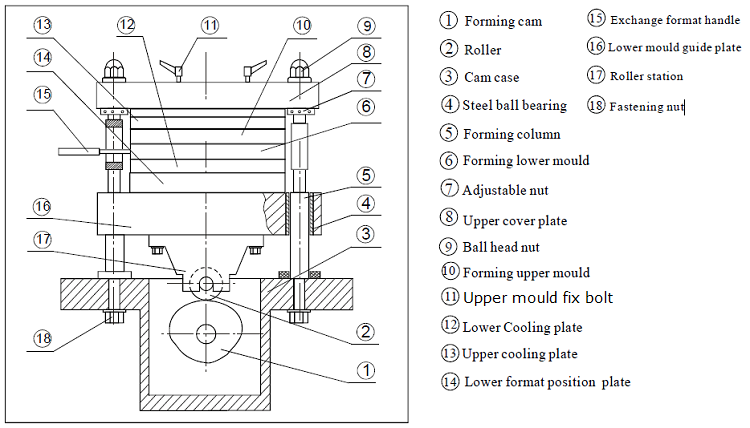DPP260 Blister Machine forming station working principle
DPP series Blister Machine forming station working principle
When the Blister Machine running the forming material (pvc) is unwound from the reel and enter into heating station on the blister machine. The temperature of the heating plates (upper and lower plates) is such that the pvc will soften and become pliable. The warm pvc will then arrive in a forming station, when the upper and lower mold close, a large air pressure (4 to 8 bar) will form the blister cavity from the forming lower mold.
When the blister is cooled the pvc becomes rigid again and maintains its shape when removed from the mold.
In cases of difficult or larger shapes, the Blister Machine will adopt “plug-assist” mechanism, the warm PVC will be physically pushed down partially into the cavity by a plug. Plug-assist results in a blister cavity with more uniform wall distribution.
Blister Machine forming lower mold installation method
Before installation, please check the exhaust hole of forming lower mold is flowing, no block (if the hole is blocked, blister can not be formed properly).
Our DPP260Ki2 Blister Machine adopts a cylinder to lock the lower forming mold in forming station, the valve to control the cylinder is installed below the forming station, before install the lower mold, turn the valve clockwise to make the locking mechanism in loosened position. Screw the handle (15) into the lower mold’s threaded hole. Making the T-slots of lower mold aimed at the cylinder piston then pushing forward. Turn the valve counterclockwise to lock the lower mold.
Blister Machine forming upper mold installation method
Before installation, please check the huffing hole of forming upper mold is flowing, and the sealing silicon ring is not damaged (make sure no air leakage during forming process). Loosen upper mold fix bolt (11), screw the handle (15) into the upper mold’s threaded hole, aimed at the groove and pushing forward, then fasten the upper mold fix bolt (11) to lock upper mold.
The schematic diagram of the Blister Machine’s forming station

